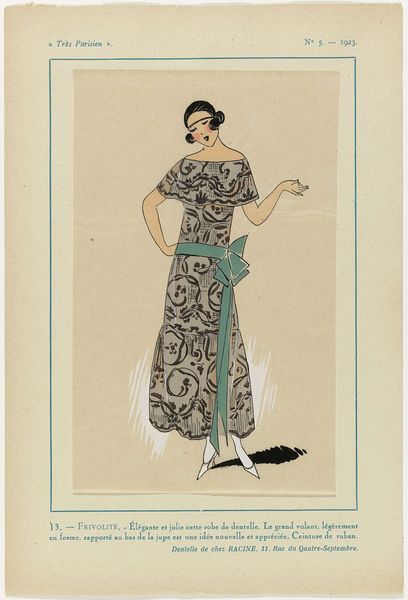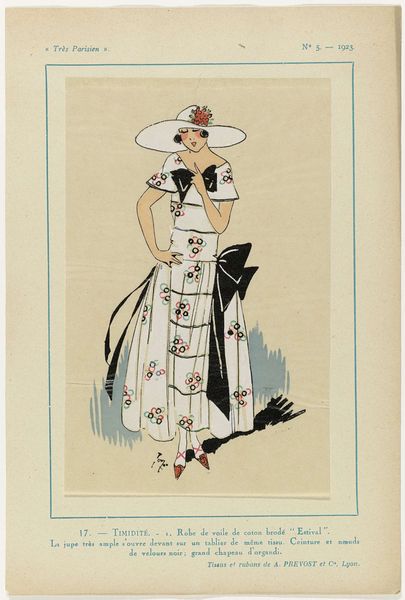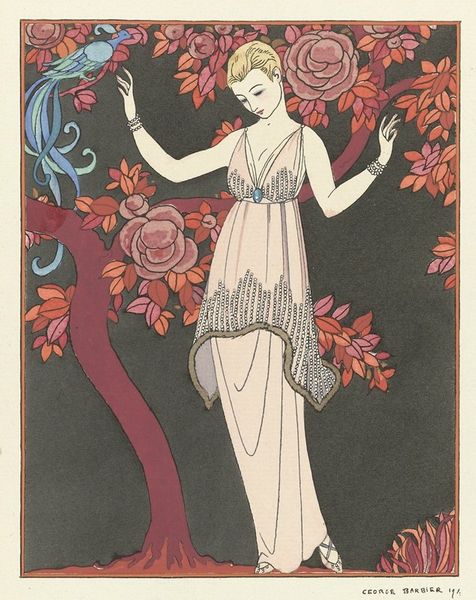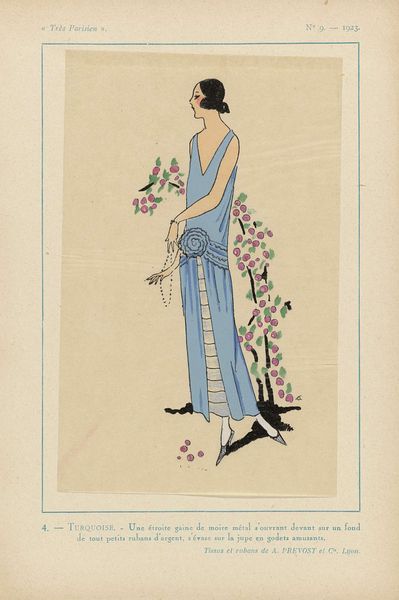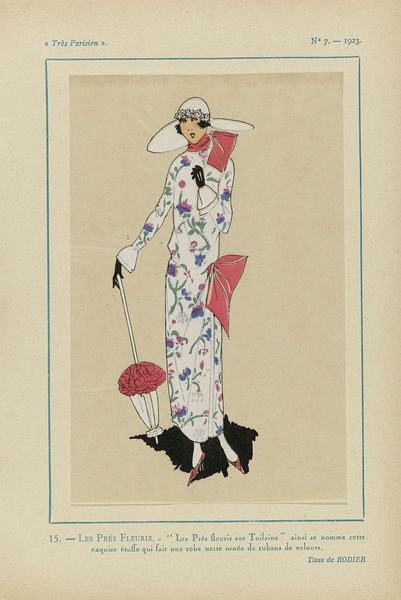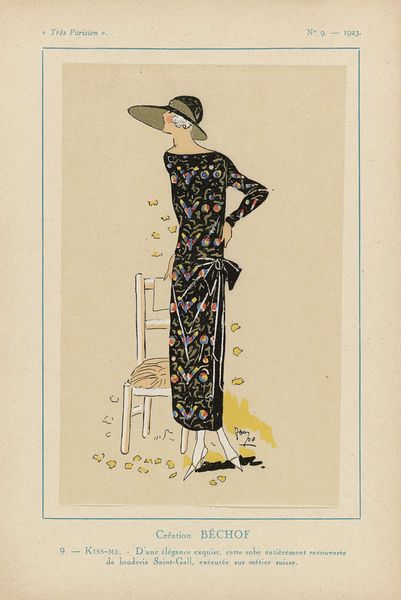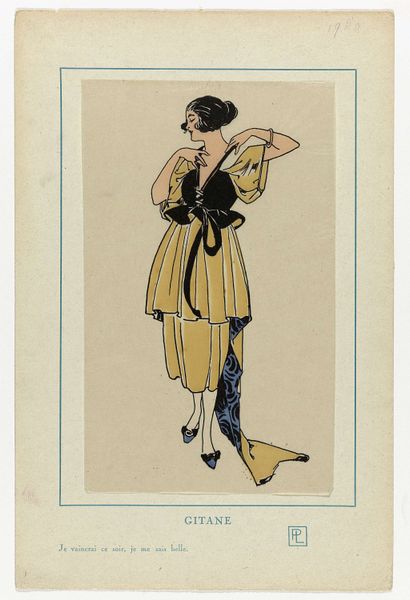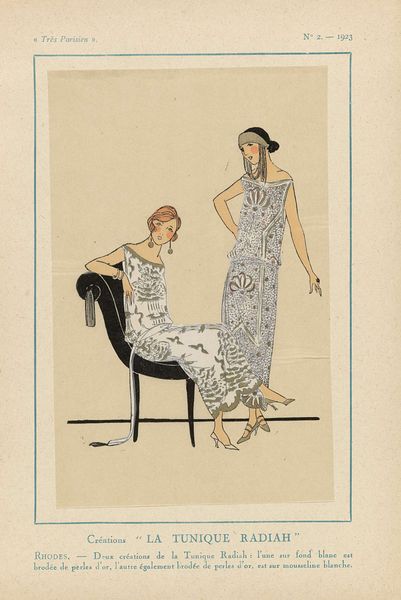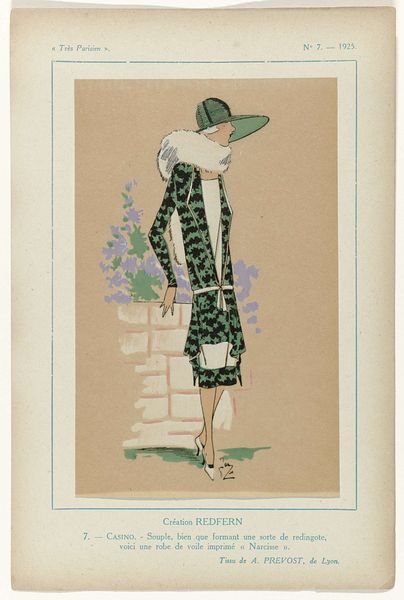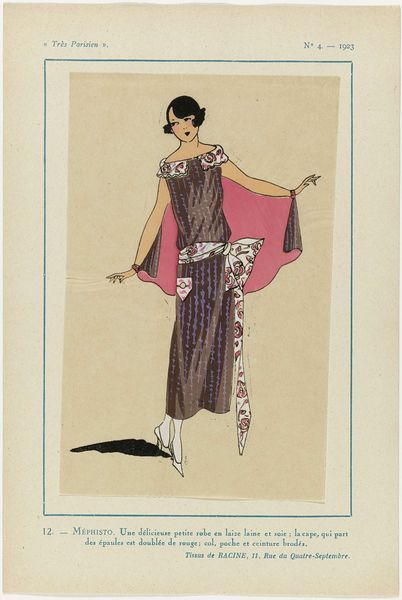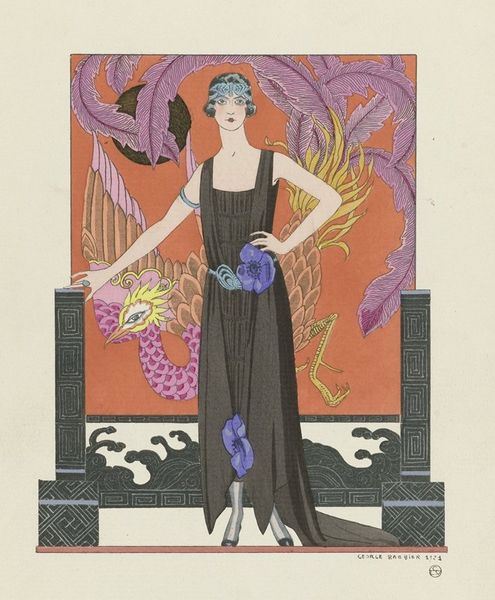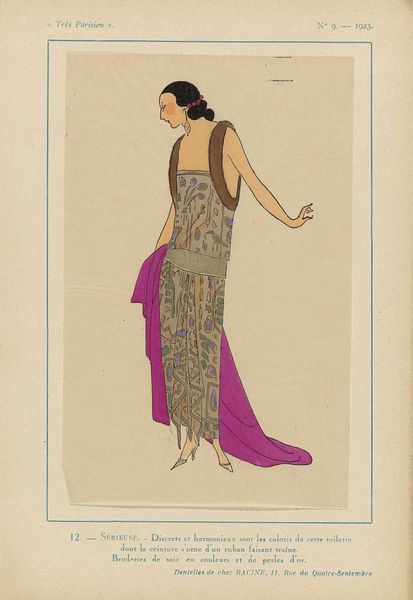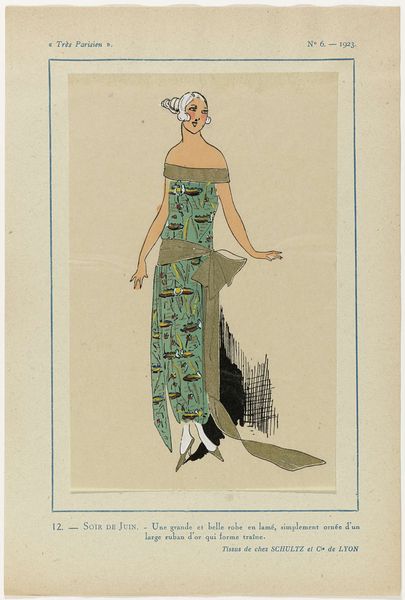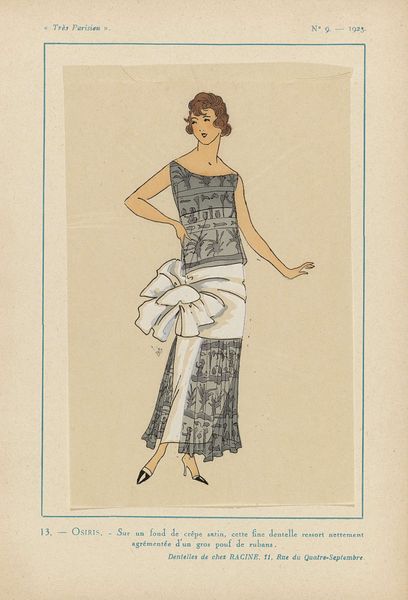
drawing, watercolor
#
portrait
#
art-deco
#
drawing
#
watercolor
#
flat colour
#
cityscape
#
watercolour illustration
#
dress
Dimensions: height 269 mm, width 180 mm
Copyright: Rijks Museum: Open Domain
Curator: J. Dory’s "Trés Parisien, 1923, No 6: Garden Party" is a stunning example of Art Deco fashion illustration currently residing at the Rijksmuseum. Editor: My initial thought? Elegance meets whimsy. I love the combination of the structured lines and the delicate floral accents. It’s incredibly charming. Curator: Let’s dive into that charm, shall we? What do you make of the interplay between the embroidery, her silk dress, and the natural world depicted here? Editor: Well, considering the title references a garden party, it highlights the blurred line between fashion, leisure, and class during that period. I’m particularly struck by how the crisp lines of the dress juxtapose with the organic shapes of the blossoms. I see the hand of craft versus industrial production. It gives you pause. Curator: Absolutely. And notice how Dory employs watercolor? I think it suggests an interesting fluidity and lightness, playing off of the supposed wealth indicated. The description beneath the image actually details the textiles house where this design originates. It seems as though "Tres Parisien" as a publication really operated to put garment production in plain view for popular consumption. Editor: Indeed. It really highlights the power of image circulation and advertising shaping taste, and perhaps, in this case, masking production conditions, the labor of craft by leaning on artistic tropes of romanticism. I also think it serves as a portrait not just of a style of dress, but of Parisian culture and idealized beauty circulating during the era, reflecting the social and artistic landscape. Curator: That's an astute point. The artist frames the garment and wearer with such graphic directness. The application of paint reads a bit more as advertising of goods and fashion. The way she holds those flowers really emphasizes a lifestyle associated with ease, wealth, and belonging. The woman, the dress, and the blossoms seem almost interchangeable as objects of desire and possession. Editor: It does prompt reflection on who has access to these spaces, to this mode of fashion and the politics of the art and garment worlds intertwined. Dory’s image becomes an artifact reflecting those tensions. Curator: It’s truly fascinating how much social history can be read from the composition and technique in this deceptively simple fashion plate. Editor: Absolutely. It reminds us that art can tell multiple stories and invite a variety of interpretations from aesthetic enjoyment to critical inquiry.
Comments
No comments
Be the first to comment and join the conversation on the ultimate creative platform.
